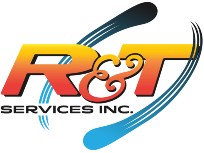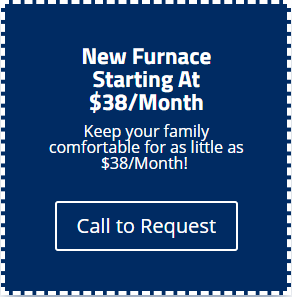Don’t Get Burned On A New Furnace
Homeowners in Billings need to replace their old furnace to ensure their heating system keeps up with weather and family needs. It can be a stressful time when it comes time to research a new furnace.
You are already under a lot of pressure if you are searching for a new furnace. Not only is your old furnace on the fritz, but your family could be cold, and you worry about how severe cold could impact your home.
You know that you need to act fast to buy a new heating system, and we know that you worry about significant issues like:
- How much does a new furnace cost?
- What is furnace efficiency, and why does it matter?
- What furnace size do you need for your home?
- What types of furnaces can you choose from?
- What are the different types of blowers?
- Are there additional costs that could come with a new furnace outside of parts and labor?
We get it- and that’s why we put together this guide to provide you with everything you need to know about new furnace research, pricing, and installation.
Need To Replace Your Furnace?
Your family needs a new furnace to keep warm this winter. Don’t risk health or happiness. We’re here to help!
How Much Does A New Furnace Cost?
Your home’s heating system is one thing that you don’t think about until something goes wrong. Winter months in Billings can reach blistering cold temperatures, and you need an HVAC system that will pump out enough heat for your home while keeping your energy bills as low as possible.
The typical lifespan of a home furnace is about 10-15 years. If your heating system is nearing this age, you should start to look for a new HVAC system to avoid unwanted complications or consequences during the cold winter months.
There are factors that you need to factor for installation costs, and we will dive into each factor later on. Here’s a quick overview of furnace prices that you can expect for a new furnace:
- Energy Efficiency Furnace Unit: $1200, $2000, $3500. Furnaces are made to perform at different levels of energy-efficient scores. Higher efficiency means that a furnace will require less energy to pump out the same amount of heat, but these furnaces use advanced technologies and are more expensive.
- Installer & Labor Costs: $1080 – $1600. A trained and licensed HVAC professional will install your new furnace and make sure all the details are taken care of. Labor costs will vary based on several factors, so be sure to talk with an HVAC contractor to ensure you understand the estimated labor costs.
- Heating System Parts: $400 to $800. You may need specialized parts depending on the type of furnace you are looking to install. Some heating systems require additional venting, new ductwork, and other work. Ask your HVAC professional about additional costs that could impact the cost of your furnace installation.
Many homeowners worry that HVAC companies don’t offer the best deals for new furnace systems, and most families don’t know enough about HVAC systems to know what they need or what to look out for during the buying process for a new furnace.
1. Furnace Efficiency
As discussed above, furnaces that operate at a higher efficiency rating will lower your energy costs since they take less energy to heat your home. However, these furnaces use advanced technologies, so you will need to pay a higher cost up-front when buying an energy-efficient heating system.
A standard-efficiency furnace offers 80% annual fuel utilization efficiency (AFUE) because 20% of energy is expelled as exhaust. On the other hand, high-efficiency furnaces provide 90% and even 95% AFUE.
- Mid-Efficiency Gas Furnace: Suppose you have a low-efficiency furnace (usually old furnaces are a 65% efficiency rating). In that case, upgrading to a new furnace with an 80 efficiency rating will have a significant impact on your heating bills. Most homeowners choose to go with a mid-efficiency unit because they usually don’t require upgrades to the venting structure, and they are easy to maintain.
- High-Efficiency Gas Furnace: Homeowners choose to install a high energy efficiency furnace if they anticipate remaining in their current home for at least ten years. This is because you want to get maximum value from this type of furnace’s reduced energy costs. Be sure to check out rebates and other incentives offered by your local and state governments, plus your utility company could offer incentives for this type of HVAC unit.
Typically, homeowners in Billings choose a mid-efficiency gas furnace for their home due to the low gas prices in Billings. The potential savings with high-efficiency gas furnaces typically do not even out for several years, so think about your energy bills and how long you intend to stay in your home to determine which type of furnace makes sense for you.
Questions About A New Furnace?
Find the perfect furnace for your home in half the time.
2. Choose The Right Size Furnace
Larger homes have the square footage, so you will need a more extensive heating system to heat the home. Buying the wrong size furnace for your home can lead to higher energy bills, more frequent breakdowns, and uncomfortable temperatures throughout the year.
| Home Size | BTUs |
|---|---|
| 1,200 Sq. Ft | 36,000 to 72,000 BTUs |
| 1,500 Sq. Ft | 45,000 to 90,000 BTUs |
| 1,800 Sq. Ft | 54.000 to 108,000 BTUs |
| 2,100 Sq. Ft | 63,000 to 126,000 BTUs |
| 2,400 Sq. Ft | 72,000 to 144,000 TBUs |
The size of a furnace is measured by British Thermal Units (BTU). This metric tells you how much heat a new system can pump out in an hour. A BTU is the amount of energy needed to increase one pound of water’s temperature by one degree Fahrenheit.
Whether you are building a new house or needing a furnace replacement, you should pay attention to the BTUs of your old furnace and the new heating system to ensure you choose the right furnace for your home.
While there are several factors that you need to take into account, here is a list of common furnace BTUs based on the size of home:
- 1,200-square-foot house: 36,000 to 72,000 BTUs
- 1,500-square-foot house: 45,000 to 90,000 BTUs
- 1,800-square-foot house: 54,000 to 108,000 BTUs
- 2,100-square-foot house: 63,000 to 126,000 BTUs
- 2,400-square-foot house: 72,000 to 144,000 BTUs
As you can see, the best furnace for your home will depend on your home’s square footage. Out friendly HVAC experts will walk through the best type of furnace for you based on your home’s size and other variables.
Improve Your Home
Install a new furnace for your home today! Our team is ready to help you understand your options.
3. Type Of Furnace
for your home is based on square footage, along with other factors like the number of windows, the age of your home, and ductwork.
Home furnace systems provide reliable and energy-efficient heating options for homeowners in Billings. You will be able to select from several heating systems as you look to replace an old furnace. Along with an efficient furnace, you will need to choose the type of furnace for your home. Here is some information that you should know when looking for different types of home furnace systems:
- Gas Furnace: Natural gas furnaces are the most common type of furnace installed throughout Billings. Installation costs are typically lower for gas furnace systems, and with an abundant supply of cheap gas, Billings homeowners usually choose a natural gas furnace for their home.
- Propane: Homeowners in rural areas who don’t have access to a gas line will choose to install a propane furnace in their home. This type of furnace does not require a gas line because it connects to a large propane storage tank.
- Electric Furnace: Electric furnaces do not require a gas line, but this type of furnace is inefficient. Billings has lots of cheap gas, so it’s best to stay away from electric furnaces due to the cost-savings seen with natural gas furnace installations.
4. Types of Blowers
Another variable that you will need to consider when choosing a new furnace is the type of blower you want for the furnace replacement. The average cost of a furnace installation will vary based on the type of blower you choose.
Here is some information to consider when you look at your new furnace:
- Single Stage: This type of furnace only allows gas to flow at a high rate through a single gas valve. This valve is either “open” or “closed,” so a single-stage furnace will be either on or off. Single-stage furnaces are an excellent choice for smaller homes and if you are not worried about energy efficiency.
- Two-Stage: Two-stage furnace systems provide more control compared to single-stage furnaces. This type of furnace offers a “low” and “high” power output, so the HVAC system can provide constant temperatures in cold or mild weather.
- Variable-Speed Blowers: A variable-speed blower has an ECM motor with a speed controller that provides precise heat and cooling output throughout the day. Variable speed blowers also help improve your home’s indoor air quality because the blower can circulate air throughout your home even then it is not blowing warm air.
Don't Wait!
Furnace acting up? It might be time for a new furnace. Let’s talk about what you need and find a great solution today!
5. Additional Costs
Exact installation costs will vary based on your home’s size, layout, and other factors. You should talk with an HVAC technician to understand if additional costs will increase your furnace installation costs like:
- Venting & Ductwork: Most furnace systems won’t work if your home doesn’t have the proper ductwork, venting, and filters needed. For example, if you move from a mid-efficiency furnace to a high-efficiency furnace, you may need new ductwork. Additional parts and labor may bring up the installation cost of your furnace.
- Permits & Inspections: Homeowners in some parts of Billings may be required to obtain various inspections and permits for a new furnace. This process can cost an extra month and bring up your installation costs.
Professional Furnace Installations
If your furnace is acting up or just not heating your home, now is the time to talk to an HVAC expert about your needs. Don’t wait for the coldest months of winter to replace your furnace.
Think about the type of furnace, energy efficiency, type of blower, and additional costs when pricing your furnace installation. Our team is standing by and ready to help you find the best furnace for your home today!
How much does a new furnace cost?
You may need a new furnace if it’s blowing lukewarm air or acting up. Here’s a quick overview of furnace prices that you can expect for a new furnace:
- Energy Efficiency Furnace Unit: $1200, $2000, $3500.
- Installer & Labor Costs: $1080 – $1600.
- Heating System Parts: $400 to $800.
Should I fix or replace my furnace?
The typical lifespan of a home furnace is about 10-15 years. If your furnace is constantly breaking down or your energy bills are high you may want to consider installing a new furnace to keep your home and family safe this winter.
What can cause my furnace to not turn on?
If you are unsure why your home’s furnace won’t kick on, then it may be time to troubleshoot how to your furnace repair yourself with these steps:
- Check your circuit breakers
- Check your thermostat settings
- Ensure your furnace filters are clean
- Check your pilot light
- Check your blower motor
- Check the furnace ignition switch








